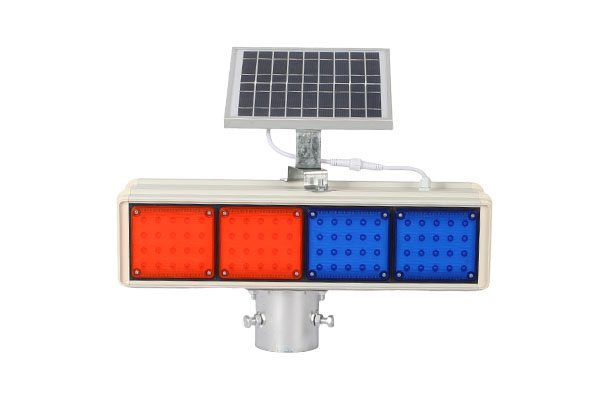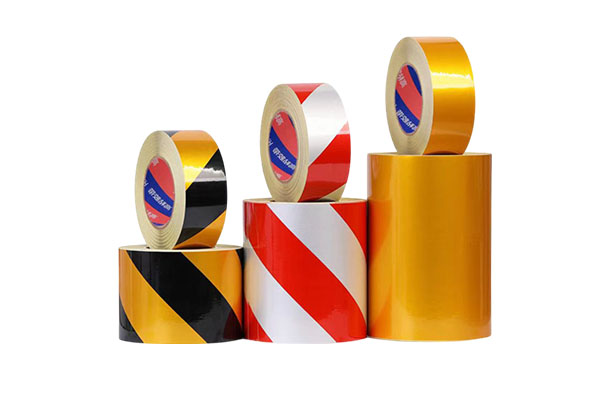Compared with traditional warning lights, what significant advantages does solar warning flashing light have in terms of energy saving and environmental protection?
Release Time : 2025-04-28
At a time when sustainable development is being advocated, solar warning flashing light, with its green and environmentally friendly characteristics, has gradually become an ideal alternative to traditional warning lights. The difference between the two in terms of energy conservation and environmental protection is significant, and solar warning flashing light shows multi-dimensional advantages.
From the perspective of energy acquisition mode, traditional warning lights mostly rely on city power or fuel power generation. Access to city power requires laying complex lines, which is not only costly, but also limited by grid coverage; warning lights powered by fuel power continue to consume non-renewable resources and require frequent fuel replenishment. Solar warning flashing light relies on photovoltaic panels to convert light energy into electrical energy, and stores energy through built-in batteries to achieve self-sufficiency. This "zero external energy" working mode allows it to operate normally in remote mountainous areas and areas without power grids, effectively reducing dependence on fossil energy, and is in line with the development trend of energy conservation and emission reduction. For example, in field construction or temporary traffic control scenarios, solar warning flashing light does not require an external power supply, and can maintain work for days or even weeks by light alone, greatly reducing energy consumption.
In terms of energy consumption efficiency, solar warning flashing light has obvious advantages. Traditional warning lights often use incandescent lamps, fluorescent lamps and other light sources, which have low efficiency in converting electrical energy into light energy, and a large amount of electrical energy is wasted in the form of heat energy. Solar warning flashing lights are generally equipped with LED light sources, whose electro-optical conversion efficiency can reach 3-5 times that of traditional light sources, and have lower energy consumption at the same brightness. At the same time, the solar warning flashing light is equipped with an intelligent control system, which can automatically adjust the working mode according to the ambient light: fully charge when there is sufficient light during the day, and activate the warning function at night or when there is insufficient light to avoid ineffective energy consumption. If traditional warning lights are controlled by timing or manual control, it is easy to waste energy by continuously lighting during the day. In contrast, the intelligent control of solar warning flashing lights significantly improves energy utilization.
From the perspective of pollutant emissions, solar warning flashing lights have achieved true "zero pollution". When traditional fuel warning lights are running, fuel combustion will produce pollutants such as carbon dioxide, carbon monoxide, and nitrogen oxides, exacerbating the greenhouse effect and air pollution; warning lights powered by municipal electricity, the thermal power generation behind them will also cause a large amount of waste gas and waste residue emissions. During the entire operation process, the solar warning flashing light does not involve the combustion of any chemical fuels. It only relies on solar energy, a clean energy source, to completely avoid the generation of waste gas, waste water, and waste residue, and has zero damage to the ecological environment. Taking the application of highway warning lights as an example, if solar warning flashing lights are used on a large scale to replace traditional products, several tons of pollutant emissions can be reduced each year, which has a positive significance for improving air quality.
In terms of sustainable resource utilization, solar warning flashing lights perform well. Traditional warning lights have a complex power supply system and vulnerable parts, and the equipment is frequently replaced, resulting in a large amount of electronic waste and resource waste. The solar warning flashing light has a relatively simple structure, and the core components such as photovoltaic panels, batteries and LED light sources can have a service life of 5-10 years or even longer under normal maintenance. Among them, the theoretical service life of photovoltaic panels exceeds 25 years, and they can be recycled and reused after retirement; the batteries are made of environmentally friendly materials, and can be professionally processed after being discarded to achieve resource recycling. In contrast, if the electronic components and metal materials of traditional warning lights are not handled properly, they are prone to heavy metal pollution. The recyclability and long life characteristics of solar warning flashing lights effectively reduce resource consumption and environmental pollution risks.
From the perspective of energy consumption during installation and maintenance, solar warning flashing light also has advantages. Traditional warning lights need to dig the road and lay cables to connect to the mains, which consumes a lot of manpower, material resources and energy during the construction process, and may cause damage to the surrounding environment; fuel warning lights require regular transportation of fuel and maintenance of equipment, which increases energy consumption and carbon emissions. Solar warning flashing light is easy to install, without complex wiring, and only needs to be fixed in a place with sufficient light; daily maintenance only requires regular cleaning of the dust on the surface of the photovoltaic panel, and energy consumption is almost negligible. This low installation and maintenance energy consumption further enhances its energy-saving and environmental protection advantages, especially for remote areas and temporary warning scenarios.
From the perspective of the cost of the entire life cycle, solar warning flashing light is more economical and environmentally friendly. Although its initial purchase cost is higher than that of traditional warning lights, traditional products have long relied on mains electricity or fuel, and energy costs continue to be incurred; solar warning flashing light only requires a small amount of maintenance cost in the later stage, and long-term use can save a lot of energy expenses. Taking the warning lights used in a port as an example, after adopting solar products, the annual electricity and fuel costs can be saved by more than 10,000 yuan, and the initial investment can be recovered in 3-5 years. In addition, the reduced energy consumption and pollutant emissions of solar warning flashing light indirectly reduce the cost of social environmental protection governance and contribute to sustainable development.
With the continuous innovation of photovoltaic technology, energy storage technology and intelligent control technology, the energy-saving and environmental protection performance of solar warning flashing light will be further improved. The application of new high-efficiency photovoltaic materials can improve the efficiency of light energy conversion; high energy density and long-life lithium battery technology can enhance energy storage capacity; more intelligent light control and time control systems can optimize energy distribution. In the future, solar warning flashing light is expected to replace traditional products in more fields, become a landmark equipment for energy conservation and environmental protection, and promote the realization of green development goals.







